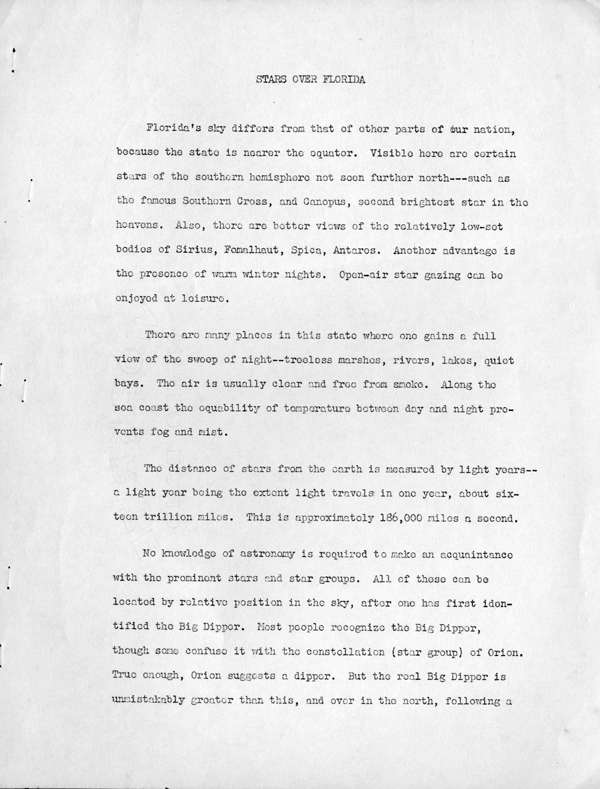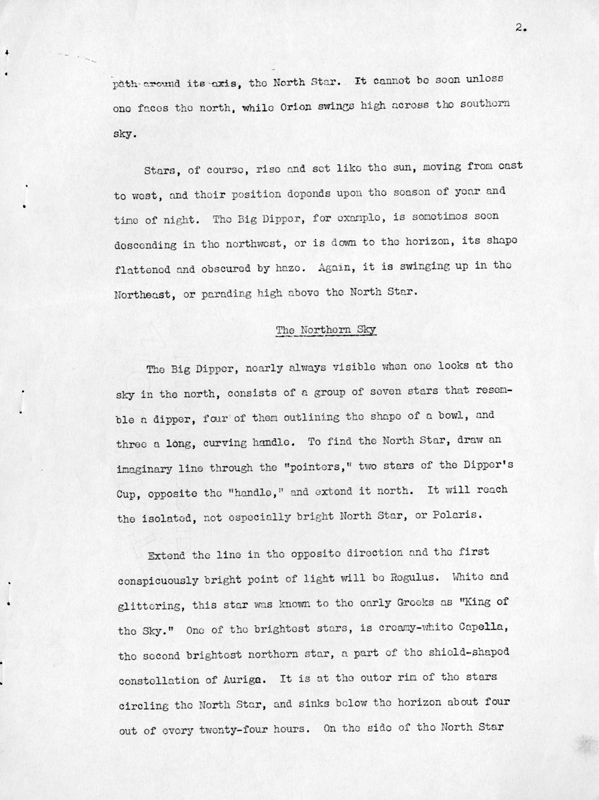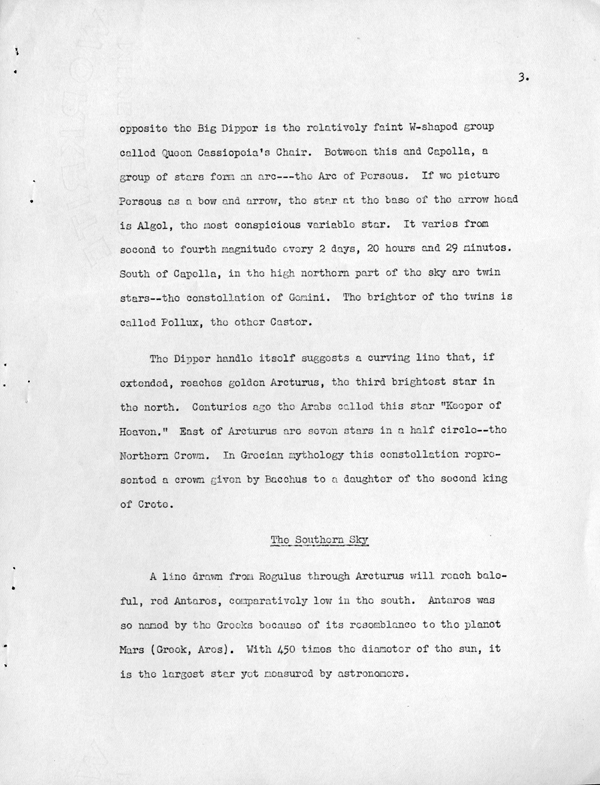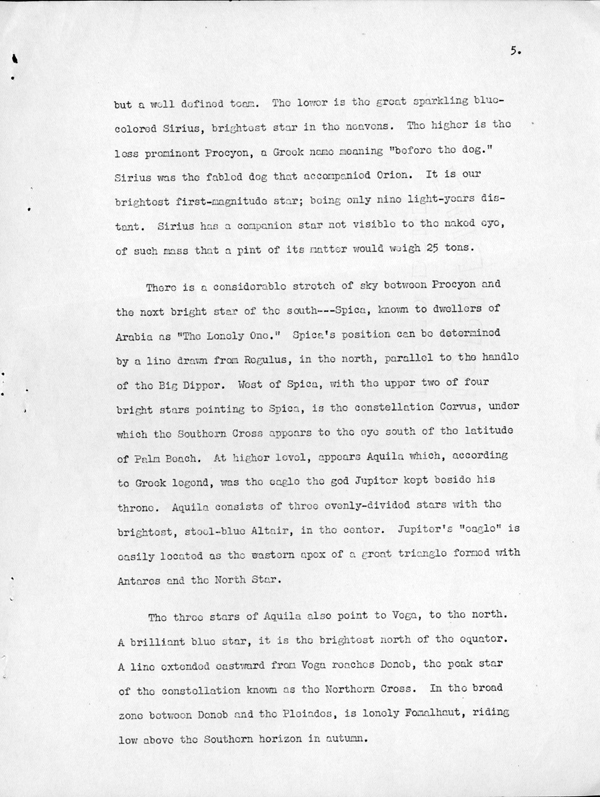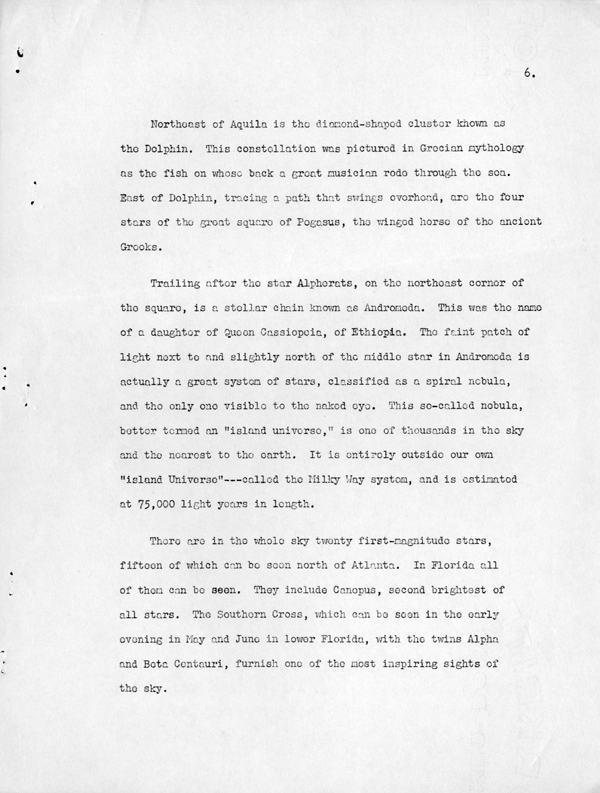Florida Memory is administered by the Florida Department of State, Division of Library and Information Services, Bureau of Archives and Records Management. The digitized records on Florida Memory come from the collections of the State Archives of Florida and the special collections of the State Library of Florida.

State Archives of Florida
- ArchivesFlorida.com
- State Archives Online Catalog
- ArchivesFlorida.com
- ArchivesFlorida.com
State Library of Florida
Related Sites
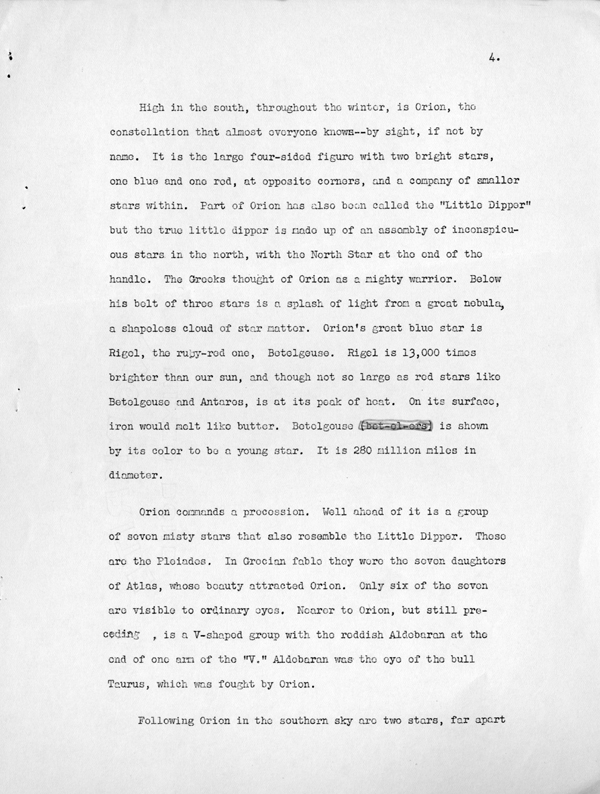
Description of previous item
Description of next item

Title
Published Date
[page 4]
High in the south, throughout the winter, is Orion, the constellation that
almost everyone knows-by sight, if not by name. It is the large four-
sided figure with two bright stars, one blue and one red, at opposite
corners, and a company of smaller stars within. Part of Orion has also
been called the "Little Dipper" but the true little dipper is made up of an
assembly of inconspicuous stars in the north, with the North Star at the
end of the handle. The Greeks thought of Orion as a mighty warrior.
Below his belt of three stars is a splash of light from a great nebula, a
shapeless cloud of star matter. Orion's great blue star is Rigel, the ruby-
red one, Betelgeuse. Rigel is 13,000 times brighter than our sun, and
though not so large as red stars like Betelgeuse and Antares, is at its peak
of heat. On its surface iron would melt like butter. Betelgeuse is shown
by its color to be a young star. It is 280 million miles in diameter.
Orion commands a procession. Well ahead of it is a group of
seven misty stars that also resemble the Little Dipper. These are the
Pleiades. In Grecian fable they were the seven daughters of Atlas,
whose beauty attracted Orion. Only six of the seven are visible to
ordinary eyes. Nearer to Orion, but still preceding, is a V-shaped group
with the reddish Aldebaran at the end of one arm of the "V." Aldebaran
was the eye of the bull Taurus, which was fought by Orion.
Following Orion in the southern sky are two stars, far apart
Title
Subject
Description
Source
Date
Contributor
Format
Language
Type
Identifier
Published Date
Image URL
Thumbnail
Transcript Path
Image Path
Image Path - Large
Chicago Manual of Style
Stars Over Florida. 1940. State Archives of Florida, Florida Memory. <https://www.floridamemory.com/items/show/181542>, accessed 16 December 2025.
MLA
Stars Over Florida. 1940. State Archives of Florida, Florida Memory. Accessed 16 Dec. 2025.<https://www.floridamemory.com/items/show/181542>
AP Style Photo Citation

 Listen: The World Program
Listen: The World Program

